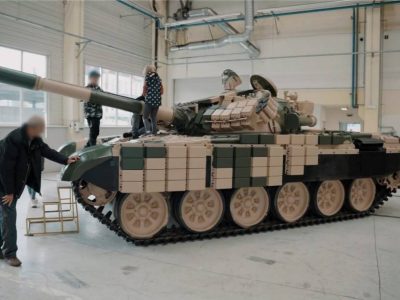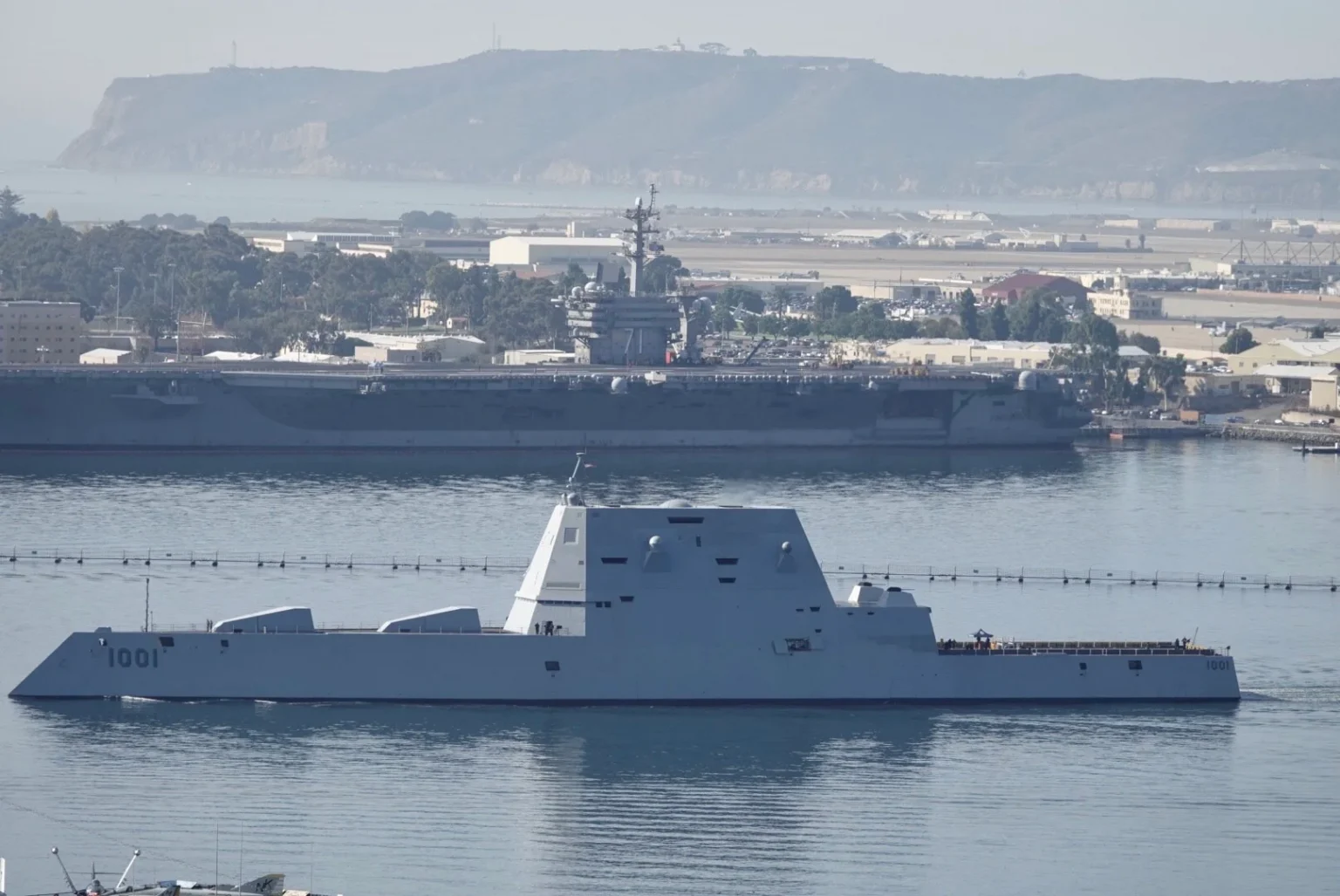
It can be said that the development of the Zumwalt-class destroyer has shown the ambition of the United States in continuing to dominate the sea surface in the future.
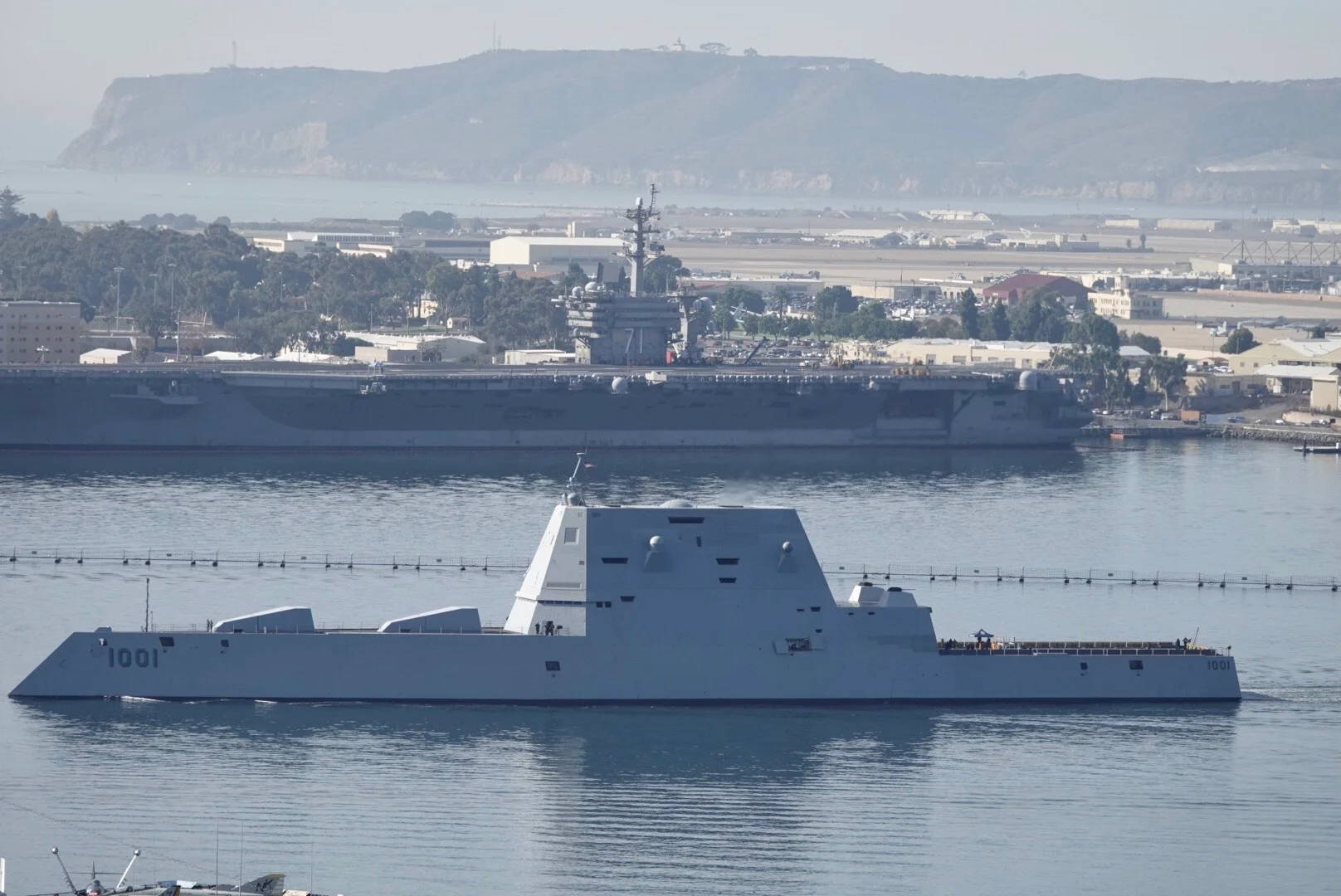
Introduce
Americans love the grandiose projects that sometimes beyond reason. The Zumwalt-class destroyer is one of the most expensive projects in the US Navy’s history. Can you imagine it, each Zumwalt now costs $4.5 billion, in addition to the $10 billion spent on development.
Meanwhile, the latest Virginia-class nuclear submarine costs $2.2 billion. Thus, the US used the budget for 2 nuclear submarines to build one Zumwalt destroyer. Like the troubled F-35 and Littoral Combat Ship, the Zumwalt’s spiraling costs were due to the Navy’s ambition to integrate completely new technologies still being concurrently developed.
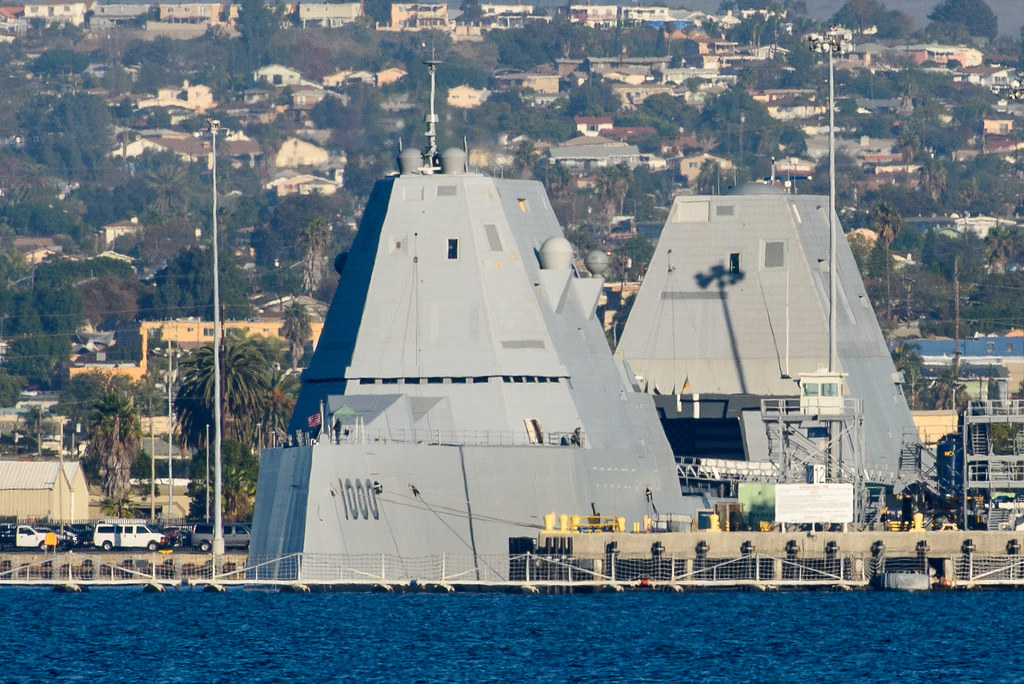
Background
Work began on the Zumwalt class in the 1990s. The goal was to develop a large, heavily-armed and highly survivable ship. Over that decade the concept changed. With the Navy focusing more on near-shore warfare, the Zumwalt evolved into a stealthy fire-support vessel sporting powerful 155-millimeter cannons.
Costs rose. The Navy cut the class down from 32 ships to just three. But the research and development overhead contributed to the three ship’s enormous, per vessel cost of nearly $8 billion, which is four times as much as the latest Arleigh Burke class destroyers cost. The US Navy on January 26, 2019 commissioned into service the guided missile destroyer USS Michael Monsoor. USS Michael Monsoor has the designation DDG-1001, is the second ship of the three ship Zumwalt class, named for a SEAL who posthumously received the Medal of Honor for his actions in Iraq in 2006 (Michael Anthony Monsoor).
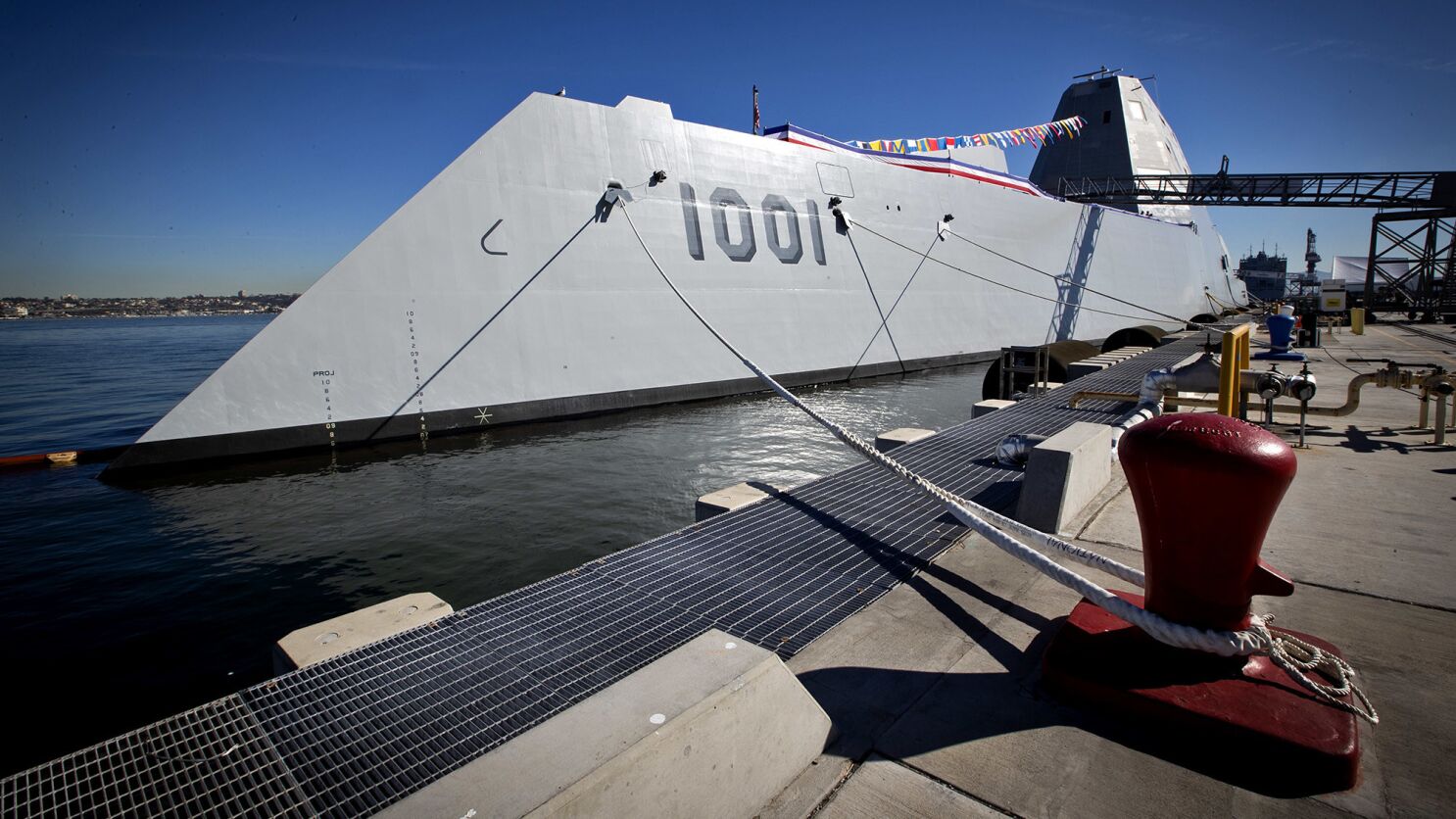
Design
Like her sister, USS Michael Monsoor has a low-signature tumblehome hulls, a design in which hull slopes inward from above the waterline. This significantly reduces the radar cross section since such a slope returns a much less defined radar image rather than a more hard-angled hull form. According to a spokesman for Naval Sea Systems Command, despite being 40% larger than an Arleigh Burke-class destroyer, the radar cross-section is more akin to that of a fishing boat.
Overall, the destroyer’s angular build makes it 50 times harder to spot on radar than an ordinary destroyer. The acoustic signature is comparable to that of the Los Angeles-class submarines. Water sleeting along the sides, along with passive cool air induction in the mack reduces infrared signature. The DDG 1001 is roomy, with 180m in length, with a beam of 24.6m and displacing approximately 15,000tons, making her prime candidates for upgrades.
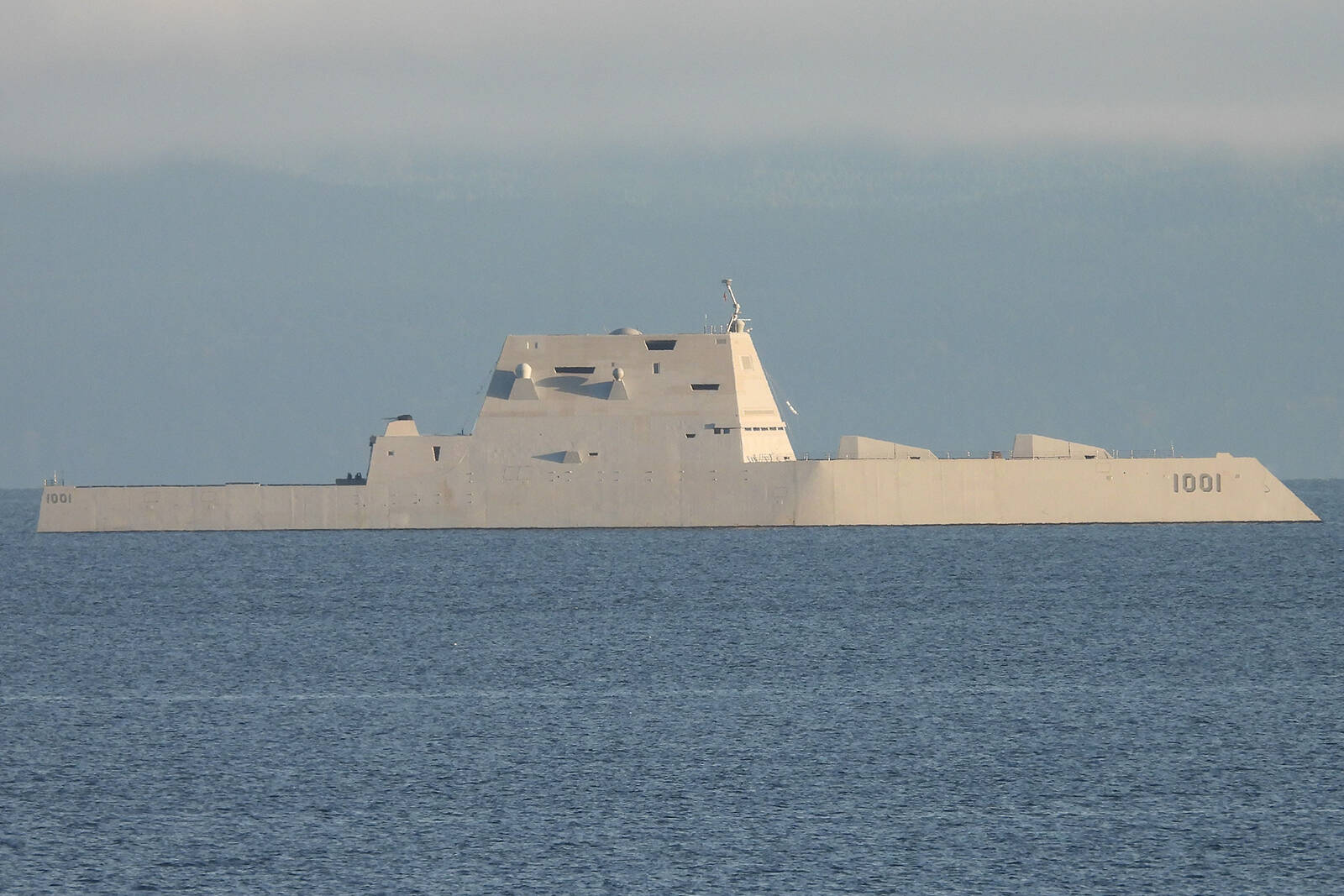
Powerplant
The ship integrates an all electric drive with an integrated power system consisting of two Rolls Royce MT30 gas turbines generated 47,500 horsepower each, there are also two Rolls Royce RR4500 turbine generators providing 5,100 horsepower each. The electrically driven motors and chilled exhaust also reduce the destroyer’s infrared and acoustic signature. The vessel’s new Total Ship Computing Environment networked all the destroyer’s systems, making them accessible from any console throughout the vessel. This allows the sleek vessel a top ocean going speed of up to 30 knots. She has a crew size of 148 officers and sailors.
Armament
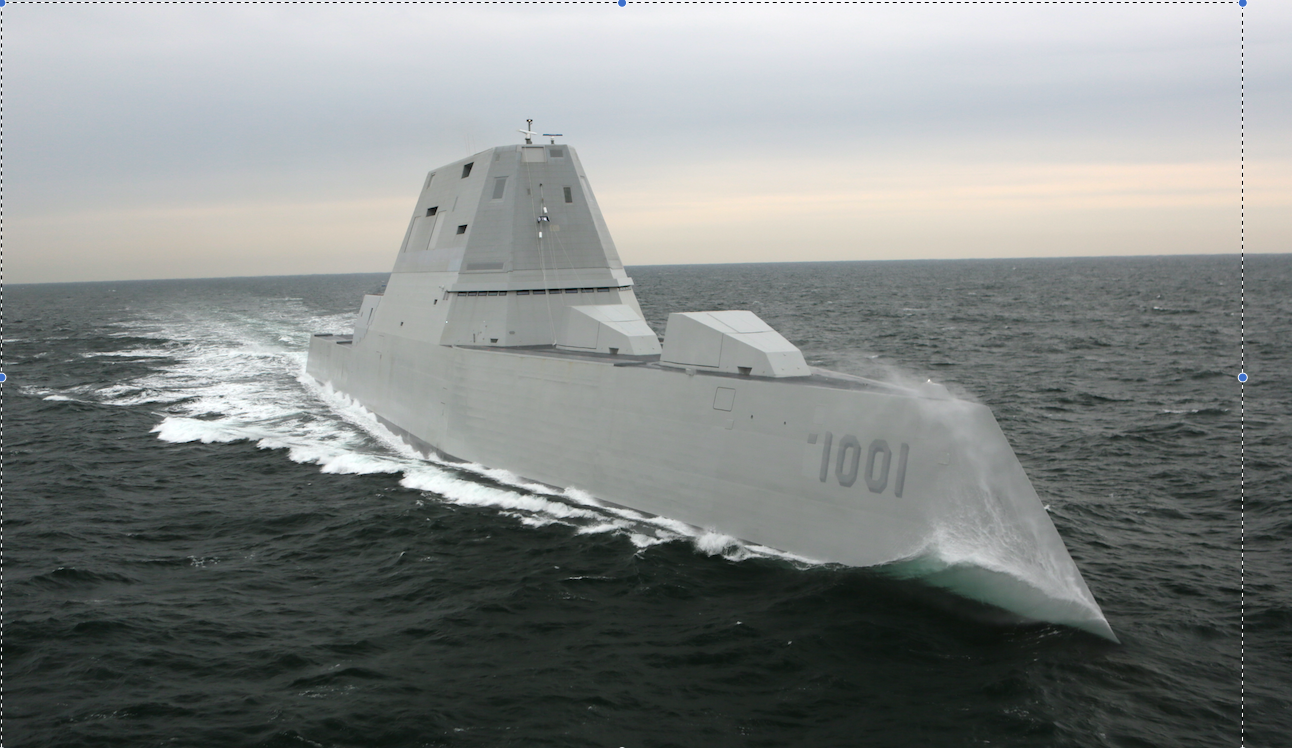
The Navy plans the USS Michael Monsoor to be a multi-mission destroyer. Optimized for the land-attack mission, it will has two Advanced Gun Systems with a combined magazine capacity of approximately 750 rounds of long range land attack and conventional munitions. Each Advanced Gun System will consist of a single barrel 155mm gun supplied from an automated magazine. Her 155mm guns are more powerful than the 127mm models on other surface ships and can fire farther.
But the ship has problems beside her high cost. her guns are incompatible with the Navy’s standard ammunition. Efforts to develop custom, precision guided shells have failed on account of the low volume and resulting high cost. Its rocket boosted GPS-guided shells cost $800,000 dollars each, nearly as expensive as more precise, longer-range and harder hitting cruise missiles. The Navy finally canceled the insanely expensive munitions, leaving the USS Michael Monsoor with two huge guns it can’t fire. As of early 2019, the two Zumwalts both lack ammunition for their two guns.
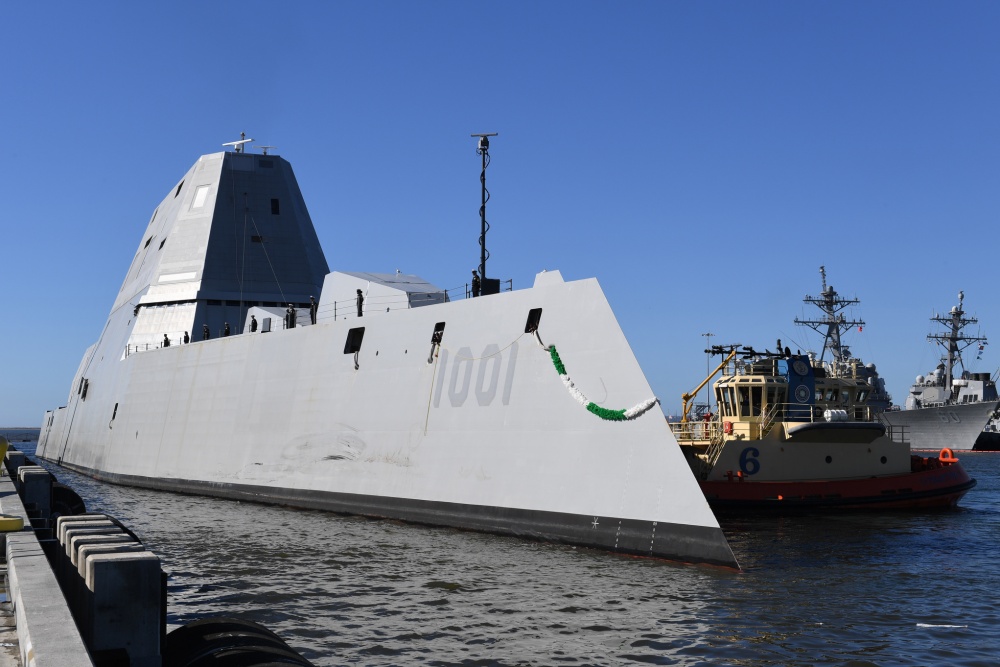
An Advanced Vertical Launch System with 80 cells will host Tomahawk Land Attack Missiles, Standard Missiles (SM2-MR) for local air defense, RIM-162 Evolved Seasparrow Missiles for engagement of both airborne and seaborne threats, and Vertical Launch Anti-Submarine Rockets for engagement of submarine threats. Two 30mm Mk 46 Mod 2 Gun Weapon System will enhance self-defense against air and surface threats.
Sensor and electronic devices
The radar suite comprises dual-band radar for horizon and volume search, a Lockheed Martin S-band volume search radar integrated with the AN/SPY-3 multifunction radar already being developed by Raytheon for the US Navy. The two radars are to be integrated at waveform level for enhanced surveillance and tracking capability.

Helicopter
The DDG 1001 ship design includes flight deck and enclosed hangar for up to two medium-lift helicopters like SH-60 or MH-60R helicopter and three MQ-8 Fire Scout UAV. It can be said that the development of the Zumwalt-class destroyer has shown the ambition of the United States in continuing to dominate the sea surface in the future. But with cost difficulties forced the United States to operate with a fleet of only three ships. And keeping a class of just three vessels operational meant very high overheads expenses in training and sustainment per individual ship.
Thus, many analysts speculate the Zumwalt’s operational career could prove short-lived. USS Michael Monsoor and her sisters will need time to prove their worth after the $22 billion sunk into the ambitious.
<Source: https://military-wiki.com/>





